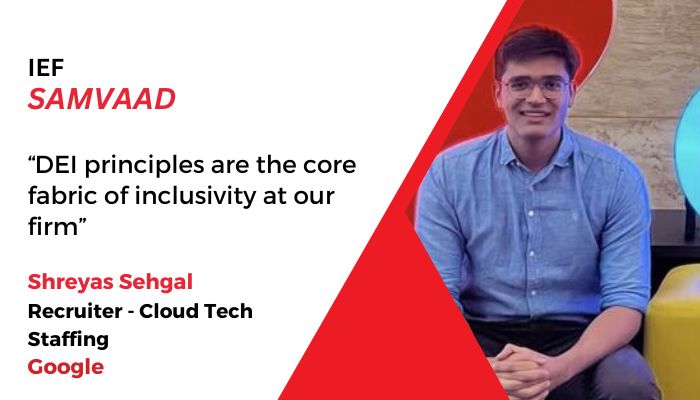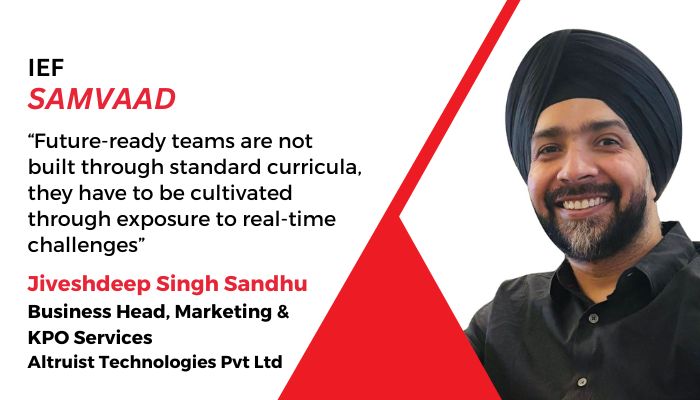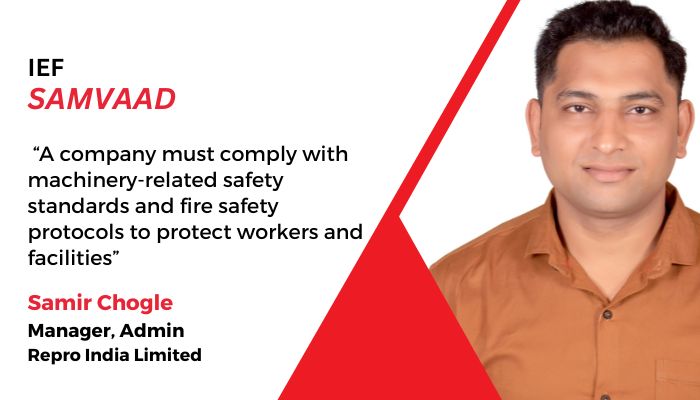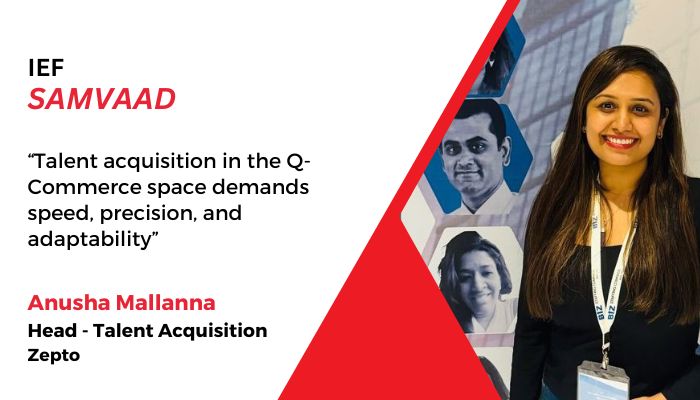Sunitha Lal, CHRO, Ather Energy, in a conversation with India Employer Forum on how organisations have to disproportionately focus on culture, diversity, inclusion, belongingness and equity, that’s the future of organisations.
Q. Tell us a little about yourself.
In the last 20 years at least, I have seen so much change in the HR industry. The world is opening up the need for employees to change and employers to recognize how they have to curate their organisations is changing. I think it’s a very interesting space and I love this journey. I have worked with organisations like AIG, Mphasis and Matrimony.com, and both are different in their own way. At AIG, I think it was going deeper because it was a product company and also servicing the larger AIG group.
Then at Mphasis, it was the scale of managing 35,000 people. Matrimony.com was a run-up to an IPO and it was an internet company which was going public. So there was a lot to learn. Other than my work, what I love a lot is reading. I think I’m a voracious reader and I like writing also; writing short stories and articles. I’ve also published a book called ‘Dotting The Blemish and other stories’ which is a collection of short stories about women I have worked with.
Q. Having more than 2 decades of experience in different companies, how has organisational culture evolved over these years? Has building people-centric processes and overall employee experience taken centre stage for all/most organisations?
We would like to believe that people’s practices have taken centre stage and culture has become very important to everyone, but the reality is far from this. In the last 15-20 years, there is a realisation that this is important and organisations want to work on that space. But how much willingness have they put in there? Is the question we have to ask ourselves. Was it intentional culture building or unintentionally something got built and we curated that to make it happen? Now, organisations know that they have to articulate values and mission and vision statements and align their team members to that, but how do you align all your business processes to this requirement? How do you align all your business processes to your culture or your values is the most essential critical piece because otherwise, the team members are going to experience two different things.
These are the values we live by, but is it actually happening where the decision has to happen? When decision-making is happening in real-time which is in your business processes, you’re not living up to those values. So, there are a few companies which have done exemplary work in this space. They have invested an enormous amount of thought in actually aligning their values and their core beliefs into their business processes and their leadership development. But there are other organisations which have articulated it but have not disproportionately invested in it. When I say invest, I’m not talking about painting the wall with the values on it. The bare minimum you can do to invest is how do you go back, again and again, to talk to your leaders about what is essential to your organisation.
When a CEO starts a Townhall, what is he/she starting with? What is the starting point? Is it about the revenues that you made or is it about the culture that you want to talk about? How many times have you postponed a meeting that is very central to culture building because there is something else that became urgent? So, anything around culture building is very important but never urgent. In my personal view, we all can do much more, be proactive instead of being very reactive.
Q. Employers in India face a massive universe of compliances. What are your views on this and how can the government focus on reforms to eliminate and simplify existing regulations and encourage ease of doing business in India?
I do not want to line up all the regulations that they have to re-look at, but one simple thing which they have to focus disproportionately on is technology platforms, to ensure that it is a single window for all the labour compliances and there is the ease of doing it. In an online application, you have to spend 5-6 days in front of a system to upload some documents. By the end of it, you have already lost the plot. So, how do you make your online work actually resilient and intuitive, and ensure that all the compliance is required to start.
For example, we want to open up a new factory. Everything that’s required to get a labour licence is required to do this through one single window. And that is very clearly given to us saying that within this time frame, this will be done. That reduces a lot of angst within the organisations when they are applying and also there is a lot of transparency and also inspections happen once a year. What is the reason that we have all these governance or regulations around labour is primarily because there is an employer and an employee and the equation has to not be tilted towards who’s more powerful. It has to be tilted to be very centred you know and both parties are taken care of and there are certain basic protocols that are taken by the organisations when they’re setting up.
When we don’t make these online transparent and inspections also being very clear, when those objectives are not very clear, what happens is an employee who’s supposed to be the centre of all of this is already not there because this becomes a conversation between the government and the organisations, each one trying to manage each other. What has to be sent in the centre of all of this should be the employee welfare, which will never be sent out so I think we have to bring it into online platforms and single window system and clarity on inspections and objective of why we do these inspections and who does it, and also clarity about all of this is a very transparent way the government has to bring in.
Q. Organisations are now focusing mainly on their DE&I and a significant portion of that falls on having equal women employees and equal pay. But the gender gap at work continues to widen. What’s holding women back?
Firstly, we physically end up giving birth to people, which means that we will go on a maternity leave and it is not that once the leave is over we can immediately come back and join work. Probably, we might take an extended loss of pay etc when we come back to work. First, organisations treat maternity leave as doing a favour to women employees. Realising that this is essential if you want them to work, you have to have all these provisions taken care of and when they come back to work, do you have the systems in place that can help you make it happen?
And if a new young mother comes back to work, you realise that the person has been doing some other role for the past one year or one and a half years. Then questioning the person to ensure that she is on par with her male colleagues in terms of being up to date on what’s happening in the new technology and all of them putting a lot of more pressure on that person, the person will feel inadequate and would like to leave or put pressure on deliverables the person feels that I will not be able to manage both and then leave.
So, how do you manage that part? While you might say that it is important, I have to tap into this pool of women and this is essential for me, they have to come back to work, but if you’re not sensitising managers around it, you’re not sensitising at a system level, all those things will drive women off. Firstly, they don’t come back to work soon after delivery, and once they do, they feel so inadequate. So, how do you prepare the system to understand that it will take time, a quarter or two quarters for the person to come up to speed and deliver at the productivity that you are expecting the person to deliver?
Q. Skill gap has been a growing concern especially in the digital transformation era, leading to unemployability problems. What are the ways in which organisations can build a high-quality pipeline of talent to overcome this gap?
Organisations have to start having conversation with academia. We are consumers of people coming out of the colleges. And we pick them up and we have built infrastructure on the side of the organisations where we say as soon as we take young graduates we put them to training and then on the job training and we become very efficient in this whole supply chain. However, it has to start one step at a time. On the other hand, we have to go to academia and say this is the industry I am in. For e.g. EV is a very new space.
We have to go and have conversations with colleges, where we are talking about what is a curriculum that will help us or we are not asking to change the curriculum. When they come out of college, they have subject level understanding, and that is where they will be getting into. So, going to college is very important. While in the last 20 years, so much work has happened on the side of the organisations to absorb graduates, quickly skill them and put them on to the task, but we have not gone to the other side and worked with academia. Why haven’t we done that? Because it will turn out to be for the larger good of everyone. So, we focus on who’s coming into our organisation, scale them up quickly, bring them up to speed and then put them up into the production.
Watch the full interview: In Conversation with Sunitha Lal | CHRO | Ather Energy
About Sunitha Lal
Sunitha Lal is the CHRO at Ather Energy. She is passionate about exploring and curating organisational culture and is a strong proponent of the oral tradition of storytelling. Hierarchies and conditioned prejudices are older than the greys feared by most organisations today. Sunitha calls experience the luxury of grey hair, and she swims in the overlapping spaces of words, mindfulness, yoga, tying the great unknown to the human experience. She is the author of Dotting the Blemish and Other Stories, a collection of short stories about women that reflect and comment on the inherent prejudices we have as a society. For her work in culture and organisation building in a nascent industry like EV, she was recently awarded the ET Leader of the year ‘21.






